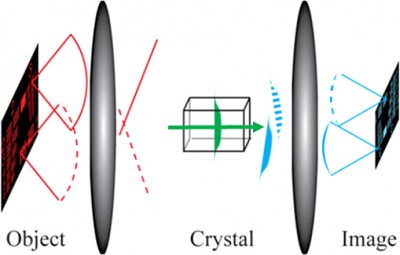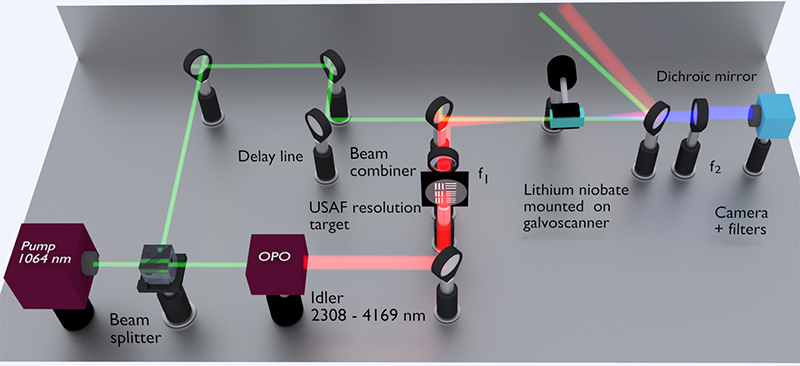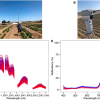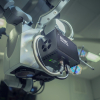
Researchers from DTU Fotonik in Denmark have developed a high-resolution imaging method that can capture mid-infrared spectral images of fast events or dynamic processes that take place on the order of milliseconds.
“This novel approach could one day be used to prescreen medical biopsies to identify the ones that need closer examination,” said Peter Tidemand-Lichtenberg, a member of the research team from DTU Fotonik in Denmark. “It could be used to look for the chemical signatures of cancer and other diseases in ways that would increase the accuracy and speed of diagnoses.”
A multi-institutional group of researchers describe the new imaging approach in a paper in Optica. They also demonstrate some of the technique’s potential applications by imaging a gas flow and distinguishing cancerous and normal samples of oesophageal tissue.
“Although mid-infrared spectroscopy is recognised as a powerful tool for chemical analysis, its applicability has been hampered by a lack of affordable light sources and sensitive detectors”, said Tidemand-Lichtenberg. “To overcome this barrier, we used an approach that translates information from the mid-infrared region, where the chemical signatures are most distinct, to the near infrared, where today’s camera technology is most mature and sensitive.”
The researchers drew on non-linear frequency conversion in which energy is added to a photon to change its wavelength. Although frequency conversion, or upconversion, is often used to change the wavelength of a laser’s output, the researchers from DTU Fotonik developed a detection system that could shift an entire mid-IR image into the NIR wavelength range while preserving all the spatial information. The system incorporates a new mid-IR light source developed by collaborators from The Institute of Photonic Sciences (ICFO). This single-wavelength light source can be tuned to different wavelengths and it also uses frequency conversion to generate the mid-IR light. In fact, the researchers used the same pulsed NIR laser for two things: to generate the tuneable mid-IR light and to achieve the image upconversion.
“This approach yields high peak power pulses in perfect synchronism, eliminating the need for sophisticated temporal control of the pulses, leading to images with a good signal-to-noise ratio”, explained Tidemand-Lichtenberg. “In addition, our optical setup is designed in a way that requires very little post-processing after the images are acquired.”

The system incorporates a single-wavelength light source that uses frequency conversion to generate mid-infrared light and can be tuned to different wavelengths. The researchers used the same pulsed near-infrared laser to generate the tuneable mid-IR light and to achieve the image conversion. They demonstrated the system by imaging a gas flow and distinguishing cancerous and normal samples of oesophageal tissue. Credit: Chaitanya Kumar, ICFO and Saher Junaid, DTU Fotonik
The researchers demonstrated the imaging speed of their new mid-IR upconversion spectroscopy approach by tuning the illumination laser to match the peak absorption of a gas flow and acquiring a video with 40 images per second. They also conducted a pilot study, headed by the team members from Exeter University, in which the system was used to evaluate cancerous and healthy oesophageal tissue samples. They found that morphology and spectral classification using their system matched well with the standard stained histopathology images.
“Our upconversion imaging approach is generic and constitutes a major simplification in realizing video-frame-rate, mid-infrared monochromatic imaging,” said Tidemand-Lichtenberg. “The spectral information provided by this technique could be combined with machine learning to enable faster, and possibly more objective, medical diagnostics based on chemical signatures without the need for staining.”













